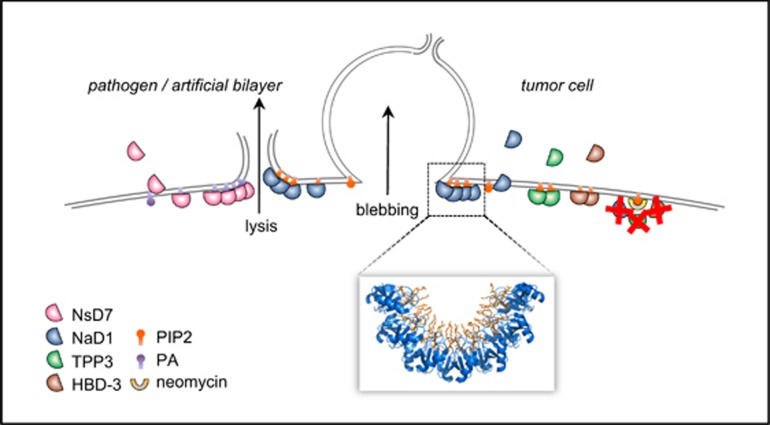Figure 1.
Phopsholipid-binding defensins oligomerize to induce cellular and artificial membrane lysis. Solanaceous plant defensins NaD1 from tobacco (blue) and TPP3 from tomato (green) as well as the human β-defensin HBD-3 (brown) have been shown to target PIP2 (orange) in the plasma membranes of pathogens (for example, fungus) and artificial membranes to induce lysis, as well as tumor cells, resulting in blebbing and lysis. The NaD1:PIP2 structure has been solved by X-ray crystallography (PDB code: 4CQK) revealing a large oligomeric complex (inset) that may facilitate membrane destabilization. Similarly, the related tobacco defensin, NsD7 (pink), can oligomerize with PA (purple) and disrupt PA-containing liposomes, suggesting a similar mechanism of membrane permeabilization. By sequestering PIP2 with neomycin (yellow), the activity of NaD1, TPP3 and HBD-3 is inhibited

